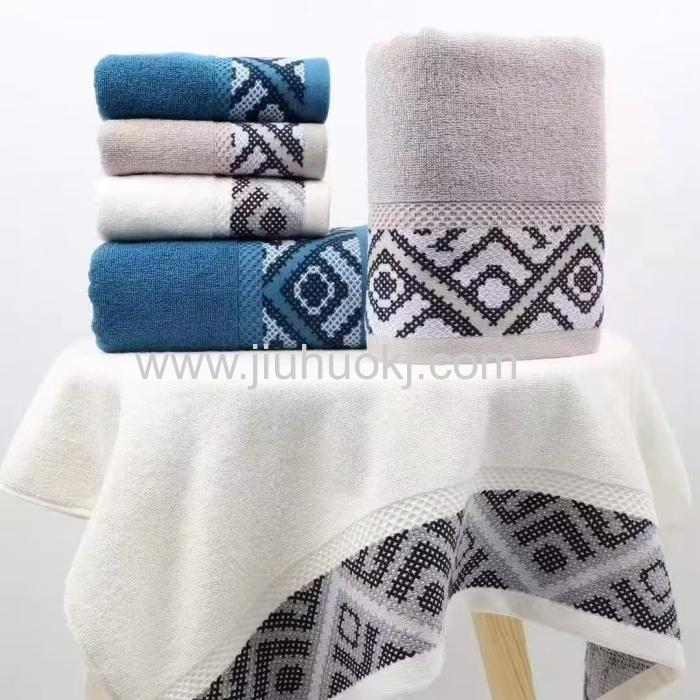
From Bathroom to Bedroom: The Best Towels and Bedding for a Cozy Home
Cozy home, towels and bedding, home textiles, complete home comfort

Introduction to Home Textiles for Complete Comfort
Home textiles transform your living space into a cozy retreat. Towels and bedding work together as functional decor. Quality materials elevate your daily routine with superior comfort. This guide explores material properties, weaving techniques, and selection criteria. It provides a professional system for complete home comfort.
The Science of Towel Materials
Different towel materials offer unique benefits. Egyptian cotton has extra-long fibers for superior absorbency and durability. Turkish cotton dries quickly, making it ideal for humid climates. Bamboo fiber provides natural antibacterial properties and eco-friendly advantages. Microfiber uses ultra-fine fibers for efficient cleaning without streaks. Organic cotton offers environmental benefits and advantages for sensitive skin. Blended materials balance cost with performance. Choose materials based on your skin type and local climate.
Bath Towel Weave and GSM Standards
GSM (grams per square meter) measures towel weight and thickness. Higher GSM values indicate greater absorbency and plushness. Loop terry and cut pile weaves create different textures and user experiences. Double-twist yarn technology enhances towel durability and fluffiness. Weave density directly affects water absorption speed. Jacquard weaving produces decorative patterns with specific care requirements. Reinforced edges extend towel lifespan. Select a GSM range based on your usage frequency and personal preference.
Building a Bathroom Textile System
Create a coordinated bathroom system with bath towels, hand towels, face cloths, and mats. Follow size ratio standards for proper proportion. Use a color coordination system with primary, secondary, and accent colors. Combine different materials for a layered user experience. Calculate product sizes based on your bathroom dimensions. Antimicrobial treatments prove effective in damp environments. Implement seasonal rotation strategies for climate adaptation. Adopt professional textile rotation and maintenance schemes used by luxury hotels.
Deep Analysis of Bedding Materials
Sleep textiles require specific material properties. Compare Egyptian cotton, Pima cotton, and Supima cotton for fiber length and hand feel. Linen offers natural temperature regulation and a distinctive wrinkled aesthetic. Silk provides temperature-neutral comfort and benefits for hair and skin. Tencel Lyocell delivers eco-friendly advantages from sustainable wood pulp and excellent moisture control. Wool delivers natural temperature adjustment and dust-mite resistance. High-tech cooling fabrics use special technology for temperature-sensitive sleepers. Use a decision matrix based on sleep habits and climate conditions.
Bedding Weave Technology and Thread Count Facts
Thread Count (TC) indicates thread density per square inch, with 200-800 being a practical range. Sateen, percale, and twill weaves offer different touches and durability. Single-ply and double-ply yarns have quality differences you can identify. Various finishing processes, like mercerization, affect fabric shine and strength. European linen blending techniques combine comfort with longevity. Learn specific checkpoints for identifying high-quality bedding, including stitch density and edge finishing. Avoid common marketing myths and focus on substantive selection criteria.
Creating a Bedroom Comfort System
Build a complete sleep environment with a mattress protector using breathable waterproof technology. Compare duvet filling materials—down, synthetic fiber, wool—for different seasons. Match pillow height to your sleeping position for proper spinal alignment. Balance functionality and aesthetics with bed skirts and decorative pillows. Implement a layering system (sheet + blanket + duvet) for flexible temperature control. Apply color psychology principles to your bedroom environment. Use professional bed-making and layering techniques for hotel-quality comfort.
Professional Care and Maintenance Guide
Extend textile life with scientific care methods. Follow washing temperature and cycle frequency standards for different materials. Tumble drying on low heat helps maintain towel fluffiness. Consider natural drying methods as alternatives to chemical bleaches. Control storage humidity and implement moth prevention measures. Learn professional techniques to restore worn pile surfaces. Use special treatment methods for common stains like cosmetics and body oils. Follow specific quality indicators to determine optimal replacement timing."

